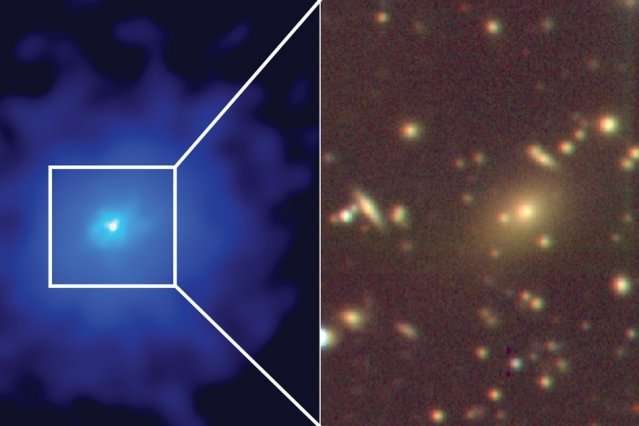At https://phys.org/print453720308.html … a new telescope in South Africa, the HIRAX, has two goals. One is to study the evolution of dark energy by tracking neutral hydrogen gas in galaxies. The second goal is to detect and locate mysterious radio flashes known as fast radio bursts.
At https://phys.org/print453710357.html … we have a study that seeks to show another way for stellar mass black holes to grow larger. Since the detection of gravitational waves 3 years ago five more detections have been observed – it is believed. They have been traced back to emissions from two stellar mass black holes merging. The other one was attributed to neutron stars merging. Space researchers have been surprised by the size of stellar mass black holes. This has until now been explained by them growing larger as they began life as stars that contained very small amounts of metal – as stars that retained metals would retain most of their mass because they produce weaker solar winds. In the new study the researchers suggest another avenue – a way for stellar mass black holes to grow larger than normal (but are they really larger than normal?)
The new theory is that supermassive black holes at the heart of galaxies are surrounded by a disk of gas and dust. In such galaxies thee are often stars lying just outside the disk – stars that could evolve to become stellar mass black holes. Once a black hole these stars can potentially move into the disk – and start chomping on the gas and dust (a feeding frenzy).
At https://phys.org/print453696235.html … water worlds are common. Exoplanets may contain vast amounts of water. We are not alone.
Doctor Strangelove is about to ride again – see www.eurekalert.org/pub_releases/2018-08/gc-sfw081218.php … scientists have found a way to make a mineral whicyh can remove co2 from the atmosphere. Climate change is leading to some really whacky science. Are they going to reduce population levels by reducing co2?
At https://phys.org/print453630247.html … a sprawling galaxy cluster has been found hiding in plain sight – so how was this missed by all those space telescopes? It is just 2.4 million light years away, according to the news release, and it contains literally hundreds of individual galaxies surrounding an extremely active supermassive black hole – or quasar. The new cluster has an erstimated 690 trillion suns. The black hole at its heart is extremely luminous. It is speculated that this is because of a recent feeding frenzy – causing it to radiate huge amounts of energy and light.

At https://phys.org/print453633558.html … astronomers identify some of the oldest galaxies in the universe. These are faint galaxies we are told – some of which orbit our own galaxy, the Milky Way. Does this mean they think that because a galaxy is fainter than normal it is older by far than the brighter ones?
At https://phys.org/print453648680.html … Hubble painst a picture – the evolving universe.
